-
 Bitcoin
Bitcoin $115000
0.88% -
 Ethereum
Ethereum $3727
2.86% -
 XRP
XRP $3.001
2.15% -
 Tether USDt
Tether USDt $1.000
0.03% -
 BNB
BNB $765.7
0.59% -
 Solana
Solana $169.5
3.52% -
 USDC
USDC $0.9999
0.00% -
 TRON
TRON $0.3391
1.24% -
 Dogecoin
Dogecoin $0.2059
2.68% -
 Cardano
Cardano $0.7418
2.24% -
 Hyperliquid
Hyperliquid $37.92
1.29% -
 Stellar
Stellar $0.4017
2.54% -
 Sui
Sui $3.508
2.67% -
 Chainlink
Chainlink $16.87
2.81% -
 Bitcoin Cash
Bitcoin Cash $569.4
2.08% -
 Hedera
Hedera $0.2472
0.22% -
 Ethena USDe
Ethena USDe $1.001
0.01% -
 Avalanche
Avalanche $22.29
1.22% -
 Litecoin
Litecoin $118.0
0.74% -
 UNUS SED LEO
UNUS SED LEO $8.924
-0.75% -
 Toncoin
Toncoin $3.236
1.65% -
 Shiba Inu
Shiba Inu $0.00001238
1.79% -
 Uniswap
Uniswap $9.827
3.02% -
 Polkadot
Polkadot $3.684
1.92% -
 Dai
Dai $1.000
0.01% -
 Monero
Monero $283.0
-2.73% -
 Bitget Token
Bitget Token $4.362
0.47% -
 Cronos
Cronos $0.1458
4.97% -
 Pepe
Pepe $0.00001054
2.58% -
 Ethena
Ethena $0.6238
9.53%
Kraken Quantitative Backtesting Tutorial: Detailed Analysis of Strategy Verification Steps
Kraken's backtesting tutorial details steps from data retrieval to strategy optimization, ensuring traders can thoroughly verify their trading strategies.
Jun 05, 2025 at 02:35 pm
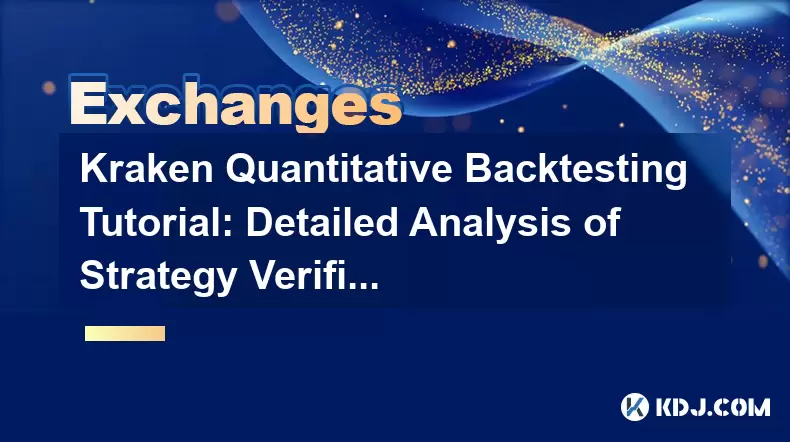
Kraken Quantitative Backtesting Tutorial: Detailed Analysis of Strategy Verification Steps
Backtesting is a critical component of developing and refining trading strategies in the cryptocurrency market. It allows traders to evaluate the performance of their strategies using historical data before risking real capital. Kraken, a prominent cryptocurrency exchange, offers robust tools for backtesting, making it an ideal platform for quantitative traders. This tutorial will guide you through the detailed steps of backtesting a trading strategy on Kraken, ensuring you understand each phase of the process thoroughly.
Understanding the Basics of Backtesting on Kraken
Before diving into the specifics of backtesting, it's essential to grasp the foundational concepts. Backtesting involves simulating a trading strategy using historical data to see how it would have performed in the past. This process helps traders identify potential flaws and optimize their strategies. Kraken provides access to historical data for various cryptocurrencies, which is crucial for accurate backtesting.
To start backtesting on Kraken, you need to familiarize yourself with the platform's trading interface and data retrieval methods. Kraken's API allows you to pull historical price data, which you can then use to test your strategies. It's important to ensure that the data is clean and complete, as any gaps or errors can lead to inaccurate results.
Setting Up Your Backtesting Environment
Setting up your backtesting environment involves selecting the right tools and preparing your data. Kraken's API can be accessed through various programming languages, with Python being a popular choice among quantitative traders due to its extensive libraries for data analysis and machine learning.
Install necessary libraries: Begin by installing libraries such as
requestsfor API interactions andpandasfor data manipulation. You can do this using pip:pip install requests pandasRetrieve historical data: Use Kraken's API to fetch historical data for the cryptocurrency pair you're interested in. Here's a basic example of how to retrieve data for Bitcoin (BTC) against US Dollar (USD):
import requests
import pandas as pdapi_url = "https://api.kraken.com/0/public/OHLC"
pair = "XBTUSD"
interval = 1440 # Daily candlesparams = {
"pair": pair, "interval": interval}
response = requests.get(api_url, params=params)
data = response.json()df = pd.DataFrame(data'result', columns=['time', 'open', 'high', 'low', 'close', 'vwap', 'volume', 'count'])
df['time'] = pd.to_datetime(df['time'], unit='s')Prepare the data: Once you have the data, you need to clean and format it to suit your backtesting needs. This might involve handling missing values, converting timestamps, and ensuring the data is in the correct format for your backtesting script.
Implementing Your Trading Strategy
With your data prepared, you can now implement your trading strategy. This involves writing code that simulates the buying and selling of cryptocurrencies based on your predefined rules. For example, a simple moving average crossover strategy could be implemented as follows:
import numpy as npdef moving_average_crossover_strategy(data, short_window=50, long_window=200):
data['short_ma'] = data['close'].rolling(window=short_window).mean()
data['long_ma'] = data['close'].rolling(window=long_window).mean()
data['signal'] = 0
data['signal'][short_window:] = np.where(data['short_ma'][short_window:] > data['long_ma'][short_window:], 1, 0)
data['positions'] = data['signal'].diff()
return data
backtest_data = moving_average_crossover_strategy(df)
This code calculates short and long moving averages and generates buy/sell signals based on their crossover. You can then use these signals to simulate trades and calculate performance metrics.
Evaluating Strategy Performance
After implementing your strategy, you need to evaluate its performance. This involves calculating key metrics such as return, volatility, Sharpe ratio, and drawdowns. Here's how you can compute these metrics:
- Return: Calculate the total return of your strategy by summing up the returns of each trade.
- Volatility: Measure the standard deviation of your strategy's returns to gauge its risk.
- Sharpe Ratio: Calculate the Sharpe ratio to assess the risk-adjusted return of your strategy.
- Drawdowns: Identify the maximum drawdowns to understand the worst-case scenarios your strategy might face.
Here's a sample code to calculate these metrics:
def calculate_performance_metrics(data):data['returns'] = data['close'].pct_change()
data['strategy_returns'] = data['positions'].shift(1) * data['returns']
total_return = data['strategy_returns'].sum()
volatility = data['strategy_returns'].std() * np.sqrt(252)
sharpe_ratio = total_return / volatility
# Calculate drawdowns
wealth_index = 1000 * (1 + data['strategy_returns']).cumprod()
previous_peaks = wealth_index.cummax()
drawdowns = (wealth_index - previous_peaks) / previous_peaks
max_drawdown = drawdowns.min()
return total_return, volatility, sharpe_ratio, max_drawdown
total_return, volatility, sharpe_ratio, max_drawdown = calculate_performance_metrics(backtest_data)
print(f"Total Return: {total_return:.2f}")
print(f"Volatility: {volatility:.2f}")
print(f"Sharpe Ratio: {sharpe_ratio:.2f}")
print(f"Max Drawdown: {max_drawdown:.2f}")
Refining and Optimizing Your Strategy
Once you have evaluated your strategy's performance, you can start refining and optimizing it. This involves tweaking parameters, testing different time frames, and incorporating additional indicators to improve results.
Parameter Optimization: Adjust the parameters of your strategy, such as the moving average windows, to find the optimal settings. You can use a grid search or other optimization techniques to systematically test different combinations.
Incorporating Additional Indicators: Consider adding other technical indicators like the Relative Strength Index (RSI) or Bollinger Bands to enhance your strategy's decision-making process.
Walk-Forward Optimization: Use walk-forward optimization to validate your strategy's robustness across different time periods. This involves training your strategy on a historical segment and then testing it on a subsequent segment.
Verifying Strategy Robustness
To ensure your strategy is robust and not just overfitting to historical data, you need to perform rigorous verification. This includes:
Out-of-Sample Testing: Test your strategy on a separate dataset that was not used during the development phase. This helps confirm that your strategy can perform well on unseen data.
Cross-Validation: Use techniques like k-fold cross-validation to test your strategy across multiple subsets of your data, ensuring it performs consistently.
Stress Testing: Simulate extreme market conditions to see how your strategy would perform during market crashes or high volatility periods.
Handling Transaction Costs and Slippage
When backtesting, it's crucial to account for transaction costs and slippage, as these can significantly impact your strategy's real-world performance. Kraken charges fees for trading, and slippage occurs when the price at which you execute a trade differs from the expected price.
Transaction Costs: Include Kraken's fee structure in your backtesting calculations. For example, if Kraken charges a 0.26% fee for trading BTC/USD, you need to deduct this from your profits.
Slippage: Model slippage by assuming a certain percentage deviation from the expected price. This can be based on historical data or conservative estimates.
Here's how you might adjust your backtesting code to account for these factors:
def calculate_performance_with_costs(data, fee=0.0026, slippage=0.001):data['returns'] = data['close'].pct_change()
data['strategy_returns'] = data['positions'].shift(1) * data['returns']
# Apply slippage
data['strategy_returns'] = data['strategy_returns'] - np.abs(data['positions'].shift(1) * slippage)
# Apply transaction costs
data['transaction_costs'] = np.abs(data['positions']) * fee
data['strategy_returns'] = data['strategy_returns'] - data['transaction_costs']
total_return = data['strategy_returns'].sum()
volatility = data['strategy_returns'].std() * np.sqrt(252)
sharpe_ratio = total_return / volatility
# Calculate drawdowns
wealth_index = 1000 * (1 + data['strategy_returns']).cumprod()
previous_peaks = wealth_index.cummax()
drawdowns = (wealth_index - previous_peaks) / previous_peaks
max_drawdown = drawdowns.min()
return total_return, volatility, sharpe_ratio, max_drawdown
total_return, volatility, sharpe_ratio, max_drawdown = calculate_performance_with_costs(backtest_data)
print(f"Total Return (with costs): {total_return:.2f}")
print(f"Volatility (with costs): {volatility:.2f}")
print(f"Sharpe Ratio (with costs): {sharpe_ratio:.2f}")
print(f"Max Drawdown (with costs): {max_drawdown:.2f}")
Frequently Asked Questions
Q: Can I backtest multiple cryptocurrency pairs simultaneously on Kraken?
A: Yes, you can backtest multiple cryptocurrency pairs on Kraken by fetching historical data for each pair and running your strategy across these datasets. However, ensure that your strategy is designed to handle different market conditions and liquidity levels for each pair.
Q: How often should I update my backtesting data on Kraken?
A: It's advisable to update your backtesting data regularly, ideally on a daily or weekly basis, to ensure that your strategy remains relevant to current market conditions. This helps in capturing the latest trends and price movements.
Q: What are some common pitfalls to avoid when backtesting on Kraken?
A: Common pitfalls include overfitting to historical data, not accounting for transaction costs and slippage, and ignoring the impact of market liquidity. Always ensure your strategy is tested on out-of-sample data and includes realistic trading conditions.
Q: Can I automate my trading strategy on Kraken after backtesting?
A: Yes, Kraken supports API trading, allowing you to automate your strategy. However, ensure that your strategy has been thoroughly backtested and validated before deploying it live. Additionally, implement proper risk management and monitoring to handle any unexpected market movements.
Disclaimer:info@kdj.com
The information provided is not trading advice. kdj.com does not assume any responsibility for any investments made based on the information provided in this article. Cryptocurrencies are highly volatile and it is highly recommended that you invest with caution after thorough research!
If you believe that the content used on this website infringes your copyright, please contact us immediately (info@kdj.com) and we will delete it promptly.
- IREN Overtakes: A New King in the Bitcoin Miner Hashrate Race?
- 2025-08-07 16:31:29
- Memecoins Mania: Whales Eye Pepe Dollar (PEPD) as Bonk Cools Off, While MoonBull Hogs the Spotlight!
- 2025-08-07 16:51:17
- Unilabs, PEPE, and Investment Risk: Navigating the Crypto Hype
- 2025-08-07 16:31:29
- Meme Coin Mania: Rug Pulls, CZ-Inspired Tokens, and the Wild West of Crypto
- 2025-08-07 16:57:14
- HashFlare Founders Face the Music: Jail Time Looms?
- 2025-08-07 14:30:12
- Pepeto's Pounce: Meme Coin Mania Meets Blockchain Infrastructure
- 2025-08-07 15:10:12
Related knowledge

How to deposit USD on Bitstamp
Aug 07,2025 at 05:18pm
Understanding Bitstamp and USD DepositsBitstamp is one of the longest-standing cryptocurrency exchanges in the industry, offering users the ability to...
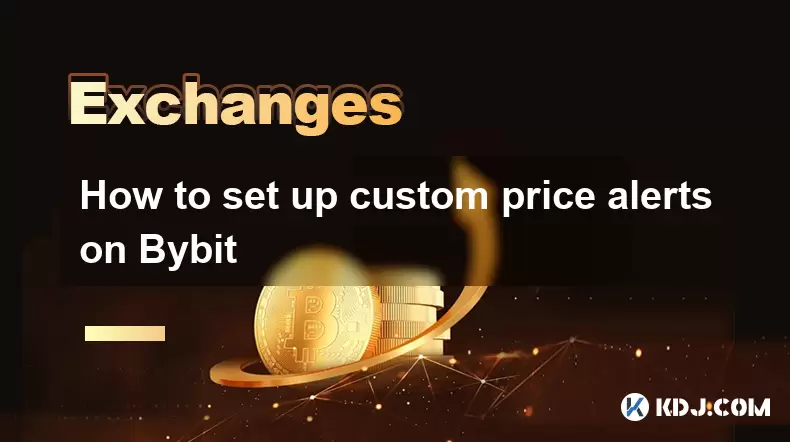
How to set up custom price alerts on Bybit
Aug 07,2025 at 04:31pm
Understanding Price Alerts on BybitPrice alerts on Bybit are essential tools for traders who want to stay informed about significant price movements i...
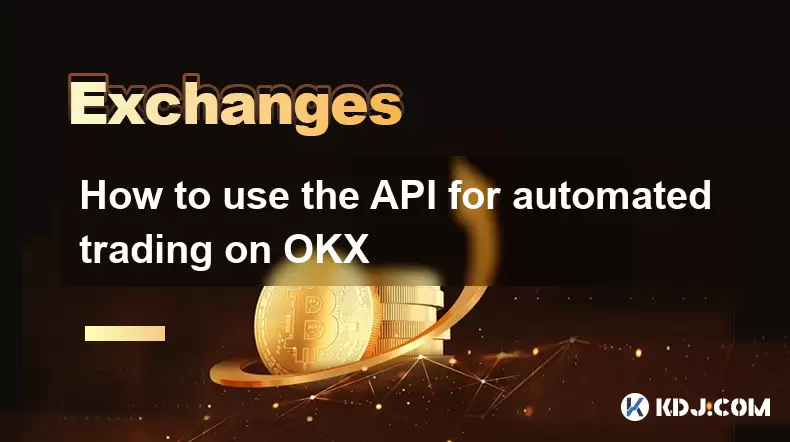
How to use the API for automated trading on OKX
Aug 07,2025 at 05:21pm
Understanding the OKX API for Automated TradingThe OKX API provides a powerful interface for users to automate their trading strategies, access real-t...
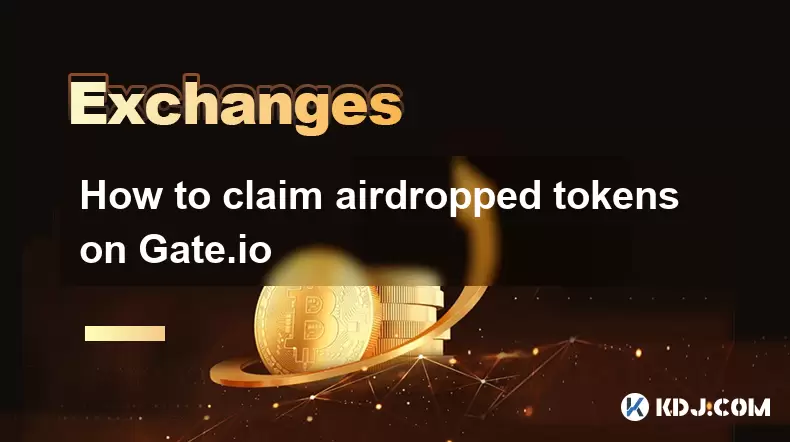
How to claim airdropped tokens on Gate.io
Aug 07,2025 at 04:01pm
Understanding Airdropped Tokens on Gate.ioAirdropped tokens are digital assets distributed for free by blockchain projects to promote awareness, incen...
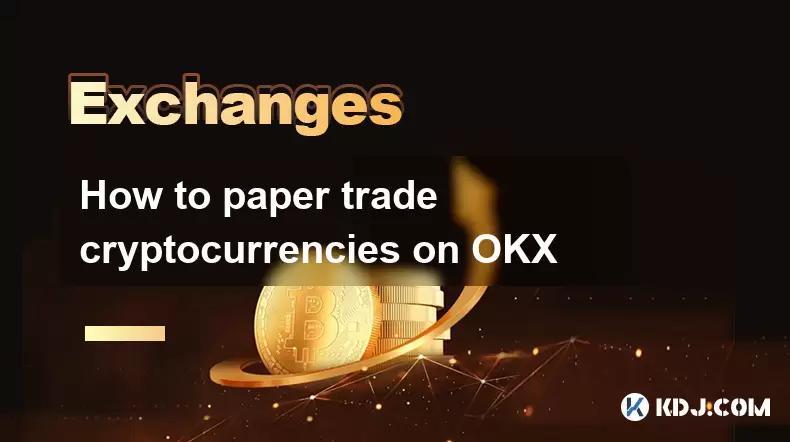
How to paper trade cryptocurrencies on OKX
Aug 07,2025 at 06:01pm
Understanding Paper Trading in the Cryptocurrency ContextPaper trading, also known as simulated or virtual trading, allows users to practice buying an...

How to understand the order book on OKX
Aug 07,2025 at 03:49pm
What Is an Order Book on OKX?The order book on OKX is a real-time, dynamic list of all open buy and sell orders for a specific cryptocurrency trading ...

How to deposit USD on Bitstamp
Aug 07,2025 at 05:18pm
Understanding Bitstamp and USD DepositsBitstamp is one of the longest-standing cryptocurrency exchanges in the industry, offering users the ability to...

How to set up custom price alerts on Bybit
Aug 07,2025 at 04:31pm
Understanding Price Alerts on BybitPrice alerts on Bybit are essential tools for traders who want to stay informed about significant price movements i...

How to use the API for automated trading on OKX
Aug 07,2025 at 05:21pm
Understanding the OKX API for Automated TradingThe OKX API provides a powerful interface for users to automate their trading strategies, access real-t...

How to claim airdropped tokens on Gate.io
Aug 07,2025 at 04:01pm
Understanding Airdropped Tokens on Gate.ioAirdropped tokens are digital assets distributed for free by blockchain projects to promote awareness, incen...

How to paper trade cryptocurrencies on OKX
Aug 07,2025 at 06:01pm
Understanding Paper Trading in the Cryptocurrency ContextPaper trading, also known as simulated or virtual trading, allows users to practice buying an...

How to understand the order book on OKX
Aug 07,2025 at 03:49pm
What Is an Order Book on OKX?The order book on OKX is a real-time, dynamic list of all open buy and sell orders for a specific cryptocurrency trading ...
See all articles

























































































